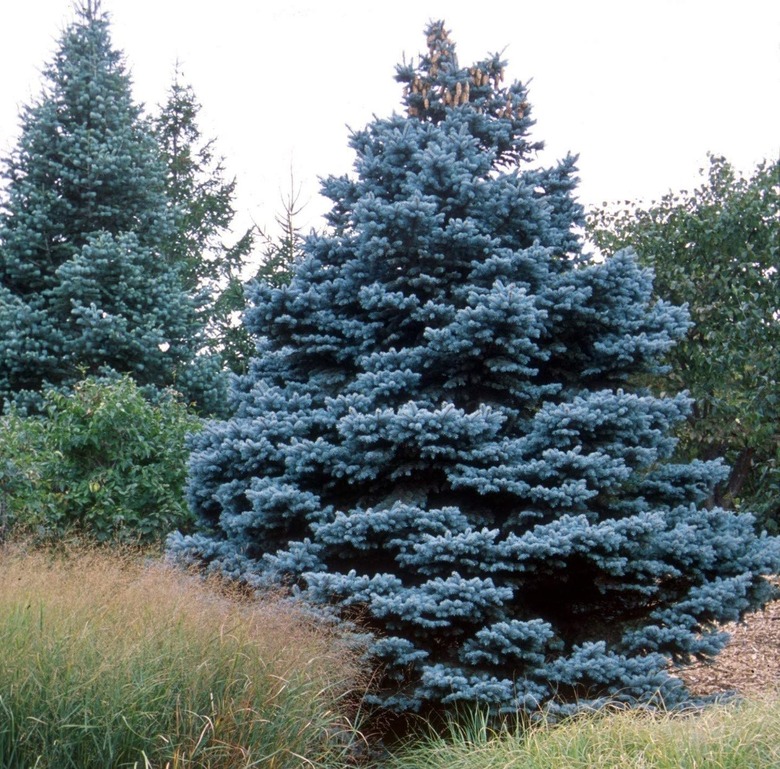The Best Time To Trim A Blue Spruce
We may receive a commission on purchases made from links.
Commonly called the Colorado blue spruce, the blue spruce is an evergreen of the pine family that is frequently planted as a landscape tree. Its stiff, horizontal branches produce bluish-green, rigid needles that create a dense, cone-shaped canopy. It thrives best in moist soil but adapts well to periods of drought. A slow-growing tree, the blue spruce responds poorly to heavy pruning but does benefit from some strategic pruning cuts.
Meet the Blue Spruce
Meet the Blue Spruce
Blue spruce or Colorado blue spruce (Picea pungens) is an evergreen with a dense, pyramidal natural shape. It maintains this attractive shape without any effort on the gardener's part. It is also called Colorado spruce, silver spruce, and pino real. Extremely cold hardy, the blue spruce thrives all the way down to U.S. Department of Agriculture plant hardiness zone 2. It is mostly found in the wild in the central and southern Rocky Mountains of the western United States.
The tree offers an unusual blue-green needle color and excellent branch symmetry. Because of those features and its slow-growing, long-lived ways, it is an extremely popular ornamental. Of medium size and relatively scarce in the wild, the blue spruce is not an important timber tree.
When to Prune a Blue Spruce
When to Prune a Blue Spruce
As a general rule, Colorado blue spruce do not require pruning to keep their natural, attractive shape, and the tree's slow growth makes it largely intolerant of heavy pruning. Sometimes, however, they may need light pruning to clean up the shape or trim out a broken branch.
The best time to do this kind of light trimming is during the tree's dormant period in winter. Late winter is best. Use sharp, sterile shears to complete the cuts. Wear gloves when pruning to protect your hands from the fairly sharp mature needles.
Thinning a Blue Spruce
Thinning a Blue Spruce
The foliage of the blue spruce is so dense that the tree can develop dead areas within the tree's canopy. These dead areas occur when the heavy foliage begins to block the air and sunlight that flows through the tree.
The blue spruce requires full sun and will not thrive in shade. To promote healthy cell development throughout the tree's canopy, canopy thinning is sometimes recommended. It is advisable to use sharp, sterile pruning shears to thin the canopy and the interior branches. Act only during the tree's dormancy.
Unlike deciduous trees, the blue spruce can take several seasons to defoliate its oldest lower-lying branches. These aging branches often shed their needles and begin to lose their natural bluish-green color. These branches can be removed during the dormant pruning sessions.
